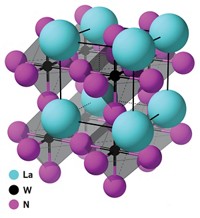Advertisement
Grab your lab coat. Let's get started
Welcome!
Welcome!
Create an account below to get 6 C&EN articles per month, receive newsletters and more - all free.
It seems this is your first time logging in online. Please enter the following information to continue.
As an ACS member you automatically get access to this site. All we need is few more details to create your reading experience.
Not you? Sign in with a different account.
Not you? Sign in with a different account.
ERROR 1
ERROR 1
ERROR 2
ERROR 2
ERROR 2
ERROR 2
ERROR 2
Password and Confirm password must match.
If you have an ACS member number, please enter it here so we can link this account to your membership. (optional)
ERROR 2
ACS values your privacy. By submitting your information, you are gaining access to C&EN and subscribing to our weekly newsletter. We use the information you provide to make your reading experience better, and we will never sell your data to third party members.
Materials
B-N-C-O In 2-D
Materials: Predictions that four-element compound will be magnetic suggests possible spintronics applications
by Mitch Jacoby
August 3, 2015
| A version of this story appeared in
Volume 93, Issue 31
A hybrid of boron, nitrogen, carbon, and oxygen has joined the small but growing club of atomically thin two-dimensional materials (Sci. Adv. 2015, DOI: 10.1126/sciadv.1500094). The finding may lead to strategies for making other ultrathin multielement films with tunable properties for nanoelectronics. Previously, researchers had reported that two atomically thin materials, hexagonal boron nitride and graphene, could be hybridized via chemical vapor deposition (CVD) to form a distinct 2-D material, BNC. Swastik Kar and Birol Ozturk of Northeastern University and colleagues sought to understand how trace levels of oxygen invariably found in CVD instruments affect the BNC product. The team prepared a set of CVD films from methane and NH3BH3 while systematically admitting oxygen to the instrument at varying flow rates. They unexpectedly found a reproducible patchwork of micrometer sized BNCO domains in a BNC matrix. The domains’ sizes and compositions were tied to the O2 concentration. Calculations predict that BNCO will be magnetic, possibly enabling applications in spintronics. This work constitutes a great leap in unlocking mysteries related to variations in electronic and magnetic properties of atomically thin 2-D materials,” says Saikat Talapatra, a thin-film physicist at Southern Illinois University, Carbondale.




Join the conversation
Contact the reporter
Submit a Letter to the Editor for publication
Engage with us on Twitter